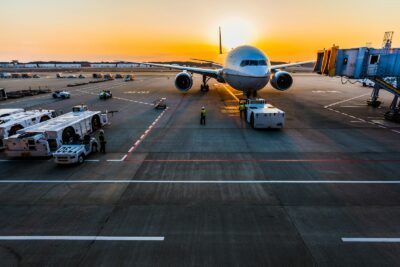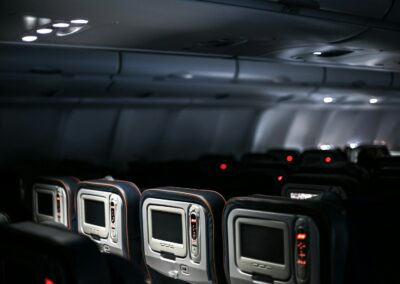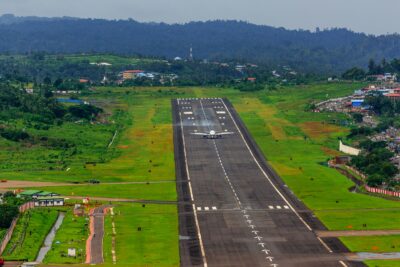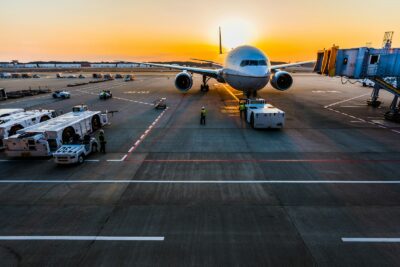Automated Docking Systems: The Future of Airport Ground Operations
Streamlining Turnaround Times with Smart Boarding Bridges
Smart boarding bridges, equipped with automated docking and alignment systems, are transforming airport operations by significantly reducing aircraft turnaround times. These innovative bridges use advanced sensors and technologies to guide themselves into precise alignment with aircraft doors, eliminating the need for manual adjustments and minimizing the risk of damage. By expediting the boarding and disembarkation process, smart boarding bridges enable airlines to optimize their schedules and improve on-time performance.
Enhancing Passenger Experience through Seamless Boarding
Beyond operational efficiency, smart boarding bridges also enhance the overall passenger experience. The seamless and efficient boarding process facilitated by automated docking systems reduces passenger wait times and frustration. Additionally, these bridges can be equipped with features like adjustable height and climate control, ensuring a comfortable transition for passengers between the terminal and the aircraft. By prioritizing passenger comfort and convenience, airports can foster a positive brand image and cultivate customer loyalty.
A Case Study: Dubai International Airport’s Smart Gates
Dubai International Airport, a global aviation hub renowned for its technological innovation, has implemented smart gates equipped with automated docking systems. These gates have significantly improved the airport’s operational efficiency by reducing aircraft turnaround times and minimizing delays. The smart gates have also garnered positive feedback from passengers, who appreciate the streamlined boarding process and enhanced comfort levels. Dubai International Airport’s successful implementation of smart gates serves as a testament to the transformative potential of this technology in the aviation industry.
Cost Savings and Sustainability Benefits of Smart Boarding Bridges
The adoption of smart boarding bridges not only improves operational efficiency and passenger experience but also offers significant cost savings and sustainability benefits. By automating the docking process, airports can reduce their reliance on manual labor, resulting in lower personnel costs. Additionally, the precise alignment capabilities of smart bridges minimize the risk of damage to aircraft, leading to reduced maintenance expenses. Furthermore, the energy-efficient design of these bridges contributes to a greener and more sustainable airport ecosystem.
The Future of Smart Boarding Bridges: Integration with AI and IoT
The future of smart boarding bridges lies in their integration with artificial intelligence (AI) and the Internet of Things (IoT). AI-powered algorithms can analyze data from various sensors and systems to optimize the docking process further, taking into account factors like weather conditions and aircraft types. IoT connectivity can enable real-time monitoring and control of smart bridges, facilitating predictive maintenance and ensuring optimal performance. As these technologies continue to evolve, we can expect smart boarding bridges to become even more intelligent, efficient, and passenger-centric.
Smart Boarding Bridges: A Catalyst for Airport Innovation
In conclusion, smart boarding bridges are revolutionizing airport efficiency and passenger experience by streamlining turnaround times, enhancing boarding procedures, and offering cost savings and sustainability benefits. Airports like Dubai International, with their successful implementation of smart gates, are leading the way in embracing this transformative technology. As AI and IoT integration further enhances the capabilities of smart boarding bridges, we can anticipate a future where airports become more efficient, passenger-friendly, and environmentally conscious. Smart boarding bridges are not merely a technological advancement; they are a catalyst for innovation in the aviation industry.
Safety Enhancements with Smart Boarding Bridges
Smart boarding bridges also contribute to improved safety in airport operations. Their automated docking systems ensure precise alignment with aircraft doors, minimizing the risk of accidents and injuries during boarding and disembarkation. Additionally, the bridges can be equipped with sensors and alarms that detect potential hazards, such as unauthorized access or equipment malfunctions, prompting immediate action from ground personnel. By prioritizing safety, smart boarding bridges enhance the overall security and well-being of passengers and airport staff.
Global Adoption and Future Trends of Smart Boarding Bridges
The adoption of smart boarding bridges is rapidly gaining momentum worldwide, with airports across different regions recognizing their potential to enhance operational efficiency, passenger experience, and safety. Major international airports are investing in these advanced systems to stay competitive in the global aviation market. As the technology continues to evolve, we can expect to see further advancements in smart boarding bridges, such as the integration of biometric authentication for seamless passenger flow and the use of augmented reality to provide real-time guidance to ground personnel. The future of smart boarding bridges is bright, and their widespread adoption is poised to revolutionize the airport landscape.
The Economic Impact of Smart Boarding Bridges on the Aviation Industry
The economic impact of smart boarding bridges on the aviation industry is significant. By reducing aircraft turnaround times, airlines can increase their operational efficiency, leading to cost savings and improved profitability. The enhanced passenger experience offered by smart boarding bridges can also boost customer satisfaction and loyalty, driving revenue growth for airports and airlines alike. Furthermore, the adoption of smart boarding bridges can stimulate innovation and investment in the aviation sector, creating new business opportunities and contributing to economic development. In conclusion, smart boarding bridges are not only transforming the airport experience but also shaping the future of the aviation industry.
#smartboardingbridges #airportefficiency #automateddocking #flightdelays #turnaroundtimes























